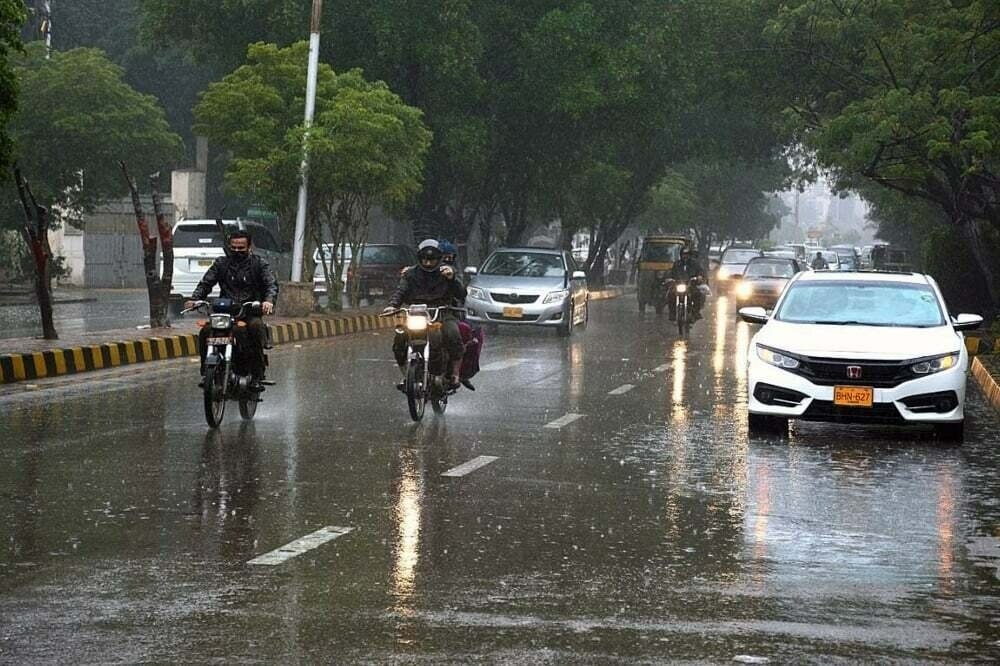
On Saturday, Karachi saw light to moderate rain, offering relief from recent extreme heat and humidity. Rainfall with thunder was recorded in areas such as Clifton, II Chundrigar Road, Saddar, Malir Colony, Landhi, Garden, and Naya Nazimabad.
Dr. Sardar Sarfaraz, Chief Meteorologist, informed Dawn.com that thunderstorms and rainbands were widespread across Karachi. He indicated that most parts of the city are expected to experience significant rainfall throughout the day. The main development of the weather system is currently in the south and is moving northward.
The Pakistan Meteorological Department (PMD) forecasts that Karachi’s maximum temperature will range between 38-40°C with 76% humidity. Mayor Murtaza Wahab confirmed that all underpasses in the city are clear and open, with municipal staff present to address any issues.
Forecast for the Next 24 Hours
The Associated Press of Pakistan reports that scattered rain, windstorms, and thundershowers are expected across various regions, including Khyber Pakhtunkhwa, central and southern Punjab, Sindh, northeast and south Balochistan, Islamabad, Kashmir, Gilgit-Baltistan, and the Pothohar region. Heavy rainfall is anticipated in isolated areas of south Punjab, northeast Balochistan, and southeast/upper Sindh.
The current weather pattern includes light to moderate monsoon currents from the Arabian Sea impacting central and southern parts of Pakistan, along with a westerly wave affecting the northern regions. Recent rain and windstorms have been reported in several areas, with notable rainfall in Khyber Pakhtunkhwa and Sindh.
Urban Flooding and Precautionary Measures
The National Disaster Management Authority (NDMA) has issued a warning about potential flash floods and urban flooding due to the heavy rainfall, which may lead to increased water levels in local nullahs. Met Office Director General Mehar Sahibzada Khan stated that the rain spell is expected to continue until July 21 and advised the public to take necessary precautions.
Rainfall is expected across all four provinces, as well as Azad Jammu and Kashmir and Gilgit-Baltistan. Landslides may affect roads in hilly regions, including Khyber Pakhtunkhwa, Murree, Galiyat, Azad Kashmir, and Gilgit-Baltistan. The National Emergencies Operation Centre (NEOC) has also warned of a possible glacial lake outburst flood (GLOF) in mountainous areas due to rising temperatures and heavy rainfall from July 17 to 23.


